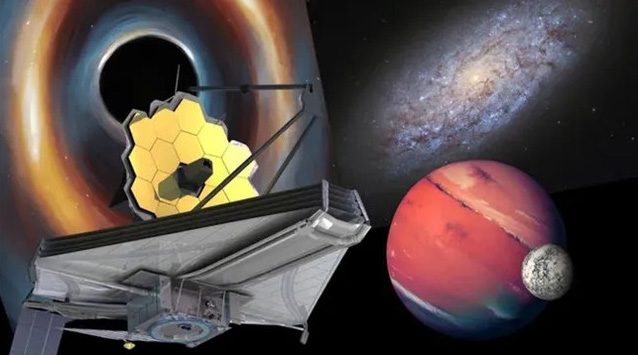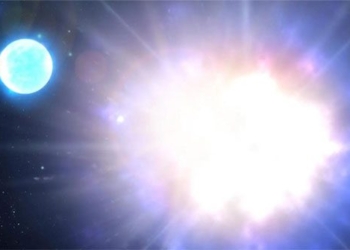The beloved James Webb Space Telescope (JWST) is set to embark on an exciting to-do list for 2024 and 2025, featuring studies on black holes, exomoons, dark energy, and much more.
The James Webb Space Telescope’s operating unit has outlined 253 General Observer (GO) programs that will utilize humanity’s most sensitive and powerful telescope for a total of 5,500 hours from July 2024 to June 2025. This range is referred to as the JWST Cycle 3.
Cycle 3 will build on the scientific advancements made by this $10 billion telescope over the past two years as it begins returning data.

Illustration of the James Webb Space Telescope and some of its observation targets for Cycle 3, including black holes, ancient galaxies, and exomoons. (Photo: Robert Lea / NASA).
Some of the targets for JWST’s third year include potential exomoons or moons orbiting exoplanets, exoplanets along with their atmospheres, supermassive black holes, and even distant galaxies that existed at the dawn of time.
JWST will also study large-scale structures in the universe to reveal details about the universe’s accelerating expansion and dark energy, the mysterious force driving that motion.
The Hunt for Exomoons is On
In Cycle 3, JWST will search for moons outside our solar system. These are known as exomoons.
David Kipping, an assistant professor of astronomy at Columbia University, is part of a team hoping to find moons orbiting the exoplanet Kepler-167e in particular. This gas giant is comparable in size and mass to Jupiter and is located 1,115 light-years away from Earth.
Searching for Supermassive Black Holes
Astronomers believe that most large galaxies in our universe have supermassive black holes at their centers, with masses equivalent to millions or even billions of suns. Some of these supermassive black holes are actively consuming gas and dust surrounding them in a material disk called an accretion disk.
The gravitational influence of these monstrous black holes is thought to heat the material in these accretion disks, causing them to emit bright radiation across the electromagnetic spectrum and creating regions known as Active Galactic Nuclei (AGN).
Additionally, any material that is not consumed by the black hole can be channeled to its poles, where it may be expelled as jets of particles moving at nearly the speed of light. When this occurs, the phenomenon is referred to as jet emission.
Studying Objects in the Early Universe
One of JWST’s primary roles is to study objects in the early universe. This powerful telescope has this capability due to the expansion of the universe stretching the wavelengths of light from distant objects as that light travels towards us, shifting wavelengths toward the “red end” of the electromagnetic spectrum.
The longer light travels to reach us, the more it shifts toward red. This means that light that has traveled for about 12 billion years is extremely redshifted, entering the infrared region of the electromagnetic spectrum and beyond the range of visibility to the naked eye.
In fact, infrared light is invisible to us. However, JWST is capable of observing this infrared light, thereby aiding in the study of the first stars and the earliest galaxies, which it will continue to do in 2025 with several Cycle 3 GO projects.
Looking beyond Cycle 3 of JWST, the call for GO proposals for Cycle 4 will be issued on August 1 of this year, with a deadline set for October 16. The evaluation process by the Cycle 4 Telescope Allocation Committee (TAC) will take place from February 3 to February 12, 2025, with selections expected to be revealed around March 5 of the following year. The JWST Cycle 4 GO programs will then commence observations of the universe starting July 1, 2025.





















































